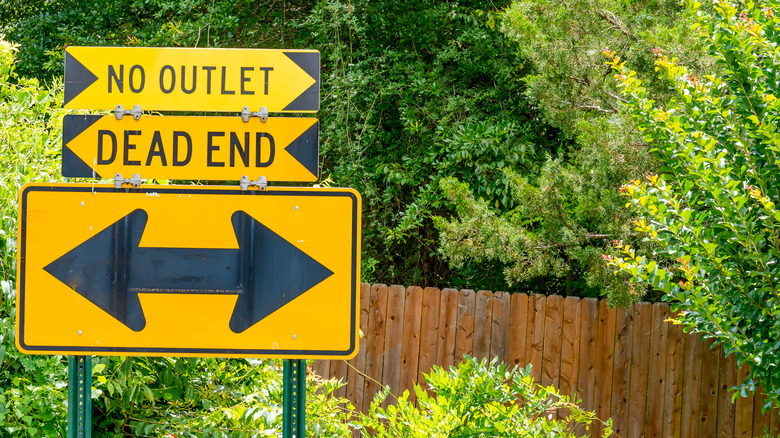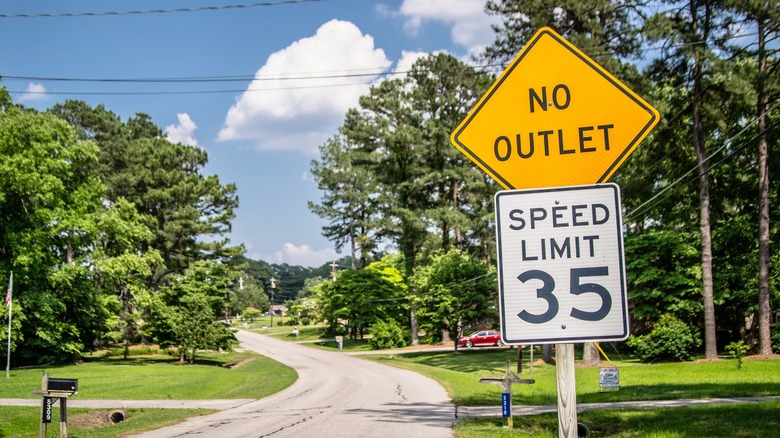What Do 'No Outlet' Signs Mean, And Are They Different From Dead Ends?
Dead End signs might not be as prevalent in the US as the mighty Stop sign, but it's arguably almost as well known. Spend even a little time on the road — as a driver or passenger — and you'll likely encounter one of them. Heck, they even share a name with a Transformers character.
What about No Outlet signs, though, don't they mean the same thing? And if so, why bother using them when "Dead End" is right there and more recognizable? It's not one of the most confusing traffic signs out there, but it still seems odd. They may not be as strange as blue stop signs, but still a bit of a head-scratcher.
There is indeed a reason for the different terminologies, however. It's a bit of a necessary semantics thing, where there can be situations where a driver would benefit from knowing ahead of time whether a turn leads to a dead end or no outlet.
One key difference
While it's technically true that driving down a street with either a "Dead End" or "No Outlet" sign in front of it will result in eventually needing to exit the way you came in, there is a little bit of nuance between the two. It's a little bit like the difference between a highway and a freeway.
As you're likely expecting, a Dead End sign indicates a single street that has no other entrance or exit. It may just sort of unceremoniously end, or it may be capped off by a cul-de-sac, but the major distinction is that it's a single road.
When you see a No Outlet sign, it's most often an indicator of a road that splits off into additional roads but none of those pathways exit out to another major street. You'll often see these in suburban prefab neighborhoods or a gated communities. Essentially there's only the one way in or out, no matter how many smaller roads may branch out from it.

